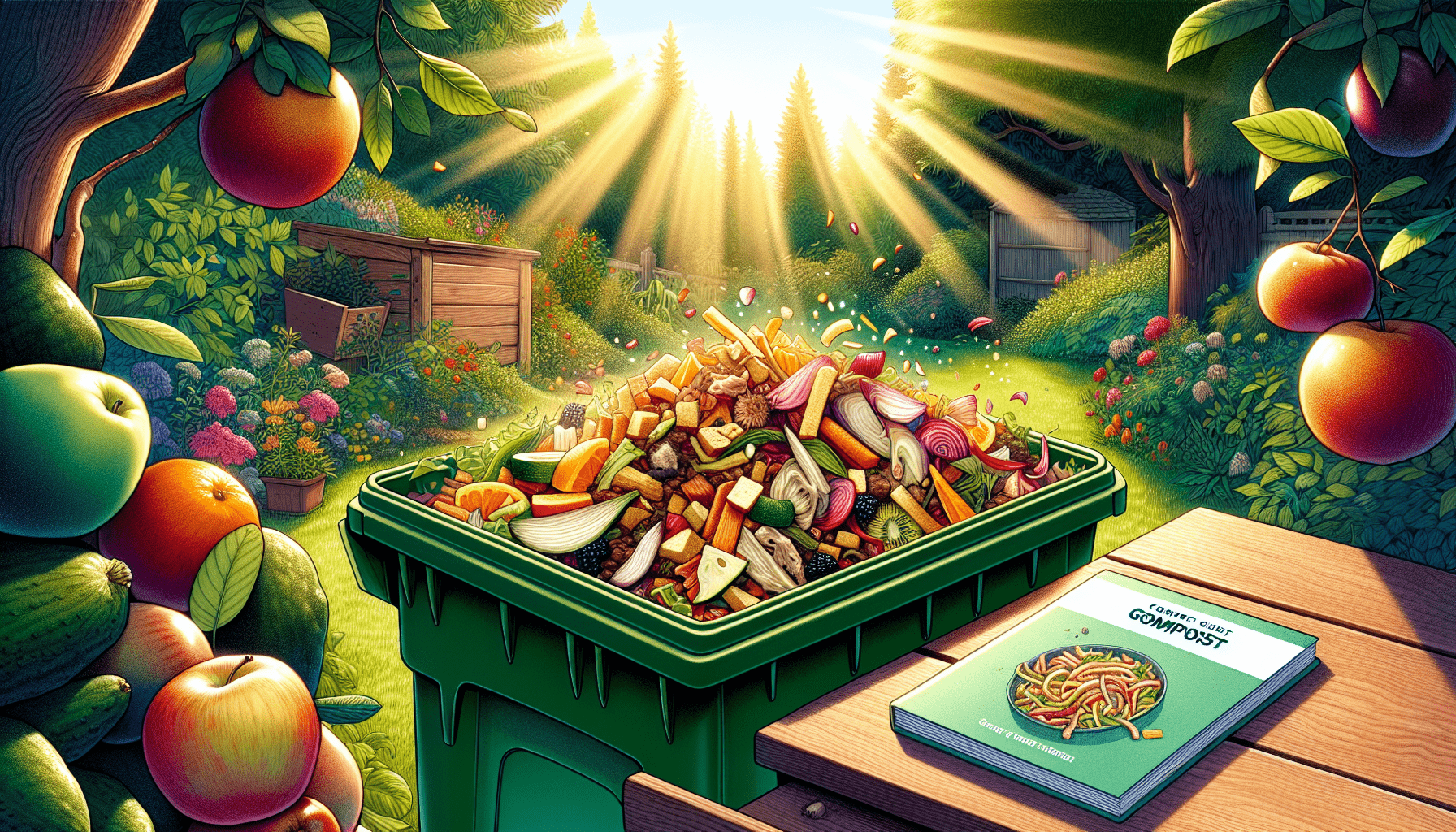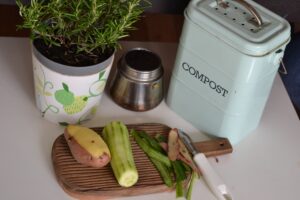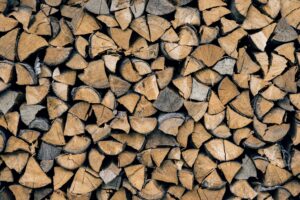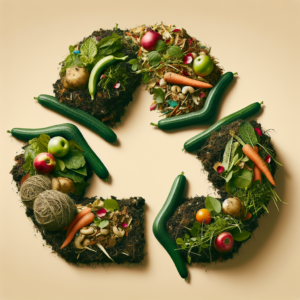Have you ever wondered if you can compost meat and dairy products? The answer may surprise you. While it’s common knowledge that composting plant-based materials like fruit and vegetable scraps is beneficial for our gardens and the environment, the rules seem to change when it comes to meat and dairy. In this article, we will explore the science behind composting these items, bust some common myths, and provide you with the information you need to make an informed decision about composting meat and dairy products. So, let’s dig in and discover the truth about composting these potentially contentious items!
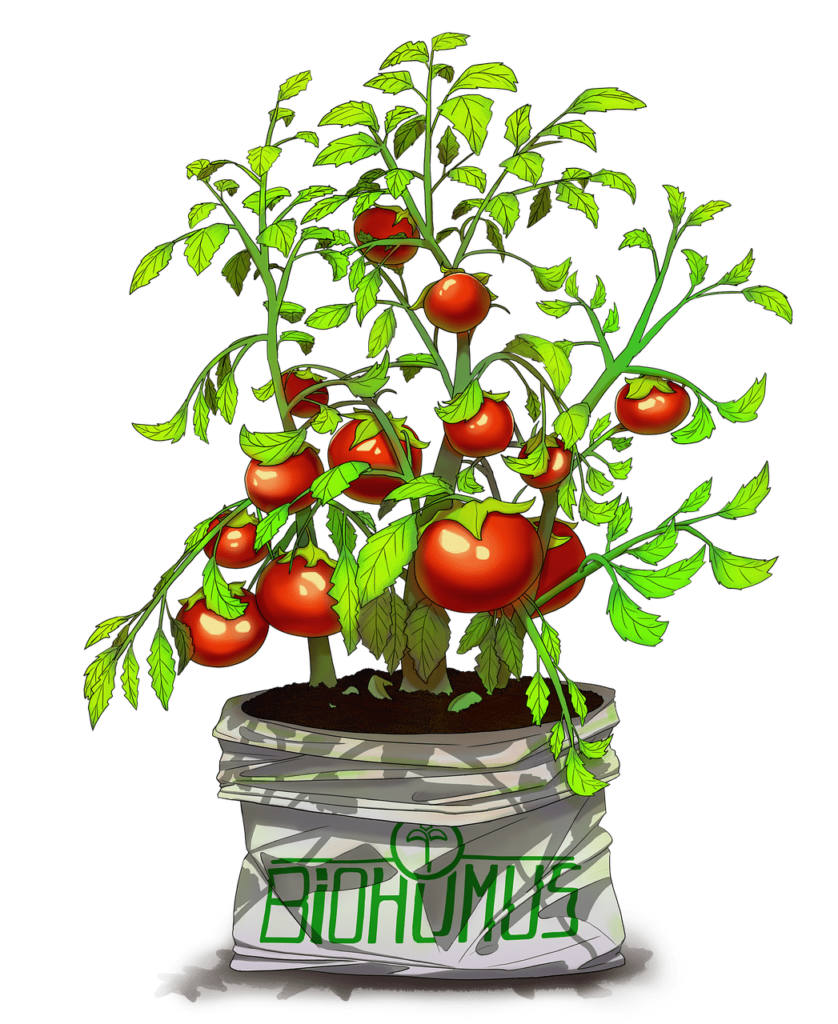
What is Composting?
Definition of Composting
Composting is a natural process that involves the decomposition of organic materials to create nutrient-rich soil. It is a sustainable way to recycle organic waste and reduce the amount of waste that goes to landfills. The end product of composting, known as compost, can be used as a fertilizer to improve soil health and promote plant growth.
Benefits of Composting
Composting offers numerous benefits, both for the environment and for gardeners. Firstly, it reduces the amount of organic waste that goes to landfills, which helps to reduce greenhouse gas emissions and conserve landfill space. Additionally, composting enriches the soil with essential nutrients, improves soil structure and drainage, and promotes healthy root growth. It also enhances the water-holding capacity of soil, reducing the need for additional watering. Composting is a cost-effective and sustainable method of waste management that benefits both our gardens and the environment.
The Basics of Composting
Organic materials for composting
To begin composting, you’ll need a good mix of organic materials. These can include kitchen scraps, yard waste, and other biodegradable items. It’s important to remember that not all organic materials are suitable for composting, especially when it comes to meat and dairy products, which we’ll discuss in more detail later.
Brown and green materials
Composting requires a balance of carbon-rich “brown” materials and nitrogen-rich “green” materials. Brown materials can include items such as dry leaves, straw, and shredded newspaper, while green materials refer to things like fruit and vegetable scraps, grass clippings, and coffee grounds. The ideal ratio for composting is roughly 3 parts brown material to 1 part green material.
Composting process
The composting process involves the breakdown of organic materials by beneficial microorganisms, such as bacteria and fungi. These microorganisms decompose the organic matter, releasing heat and breaking it down into simpler compounds. The process requires oxygen, moisture, and the right balance of carbon and nitrogen. Regular turning or mixing of the compost pile helps to aerate it and speed up the decomposition process.
Compost pile maintenance
To maintain a healthy compost pile, it’s important to monitor its moisture content. The pile should be kept moist, but not overly wet. Turning the pile regularly helps to distribute moisture and air, ensuring that the composting process is efficient. It’s also important to keep the pile covered to retain heat and prevent excessive moisture loss. With proper maintenance, your compost pile will transform into rich, dark compost in a matter of months.
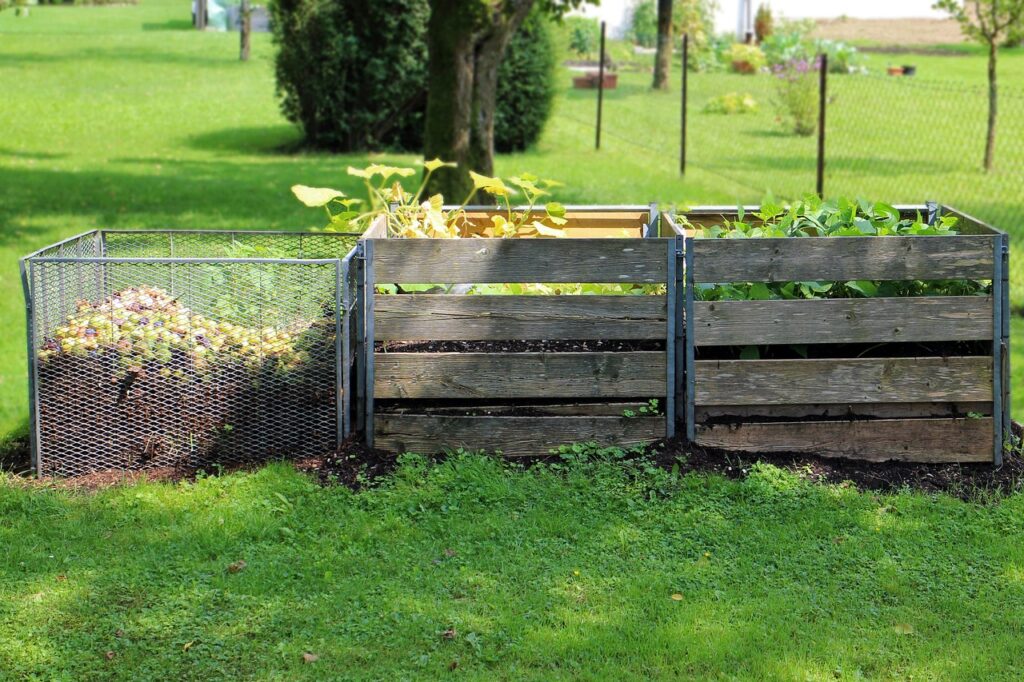
What to Compost
Composting offers a wide range of options when it comes to materials that can be composted. Here are some commonly composted items:
Fruit and vegetable scraps
Kitchen scraps, such as fruit and vegetable peels, cores, and trimmings, are excellent additions to your compost pile. These materials are high in nitrogen and break down relatively quickly, providing valuable nutrients to your compost.
Coffee grounds and filters
Used coffee grounds and filters are rich in nitrogen and can be composted. They add a nice boost of organic matter to your compost pile.
Eggshells
After cooking or baking, save your eggshells! They are a great source of calcium and can be crushed up and added to your compost. Make sure to rinse them thoroughly and let them dry before composting.
Grass clippings
Grass clippings are high in nitrogen and break down quickly. However, it’s important to use them in moderation to avoid clumping and odors. Mix them with other compostable materials to maintain a balance in your compost pile.
Leaves
Fallen leaves are a fantastic source of carbon for your compost pile. Shred them to speed up decomposition, as whole leaves may take longer to break down.
Shredded newspaper
If you have old newspapers lying around, shred them and add them to your compost. They provide carbon and help maintain a good balance with nitrogen-rich materials.
Tea bags
Used tea bags can be composted as well. They add organic matter and moisture to your compost pile.
Wood ash
Wood ash from your fireplace or wood-burning stove can be added to your compost pile in small amounts. It contains potassium and other minerals that enrich the compost.
What Not to Compost
While many organic materials can be composted, it’s important to avoid certain items that can disrupt the composting process or attract pests. Here are some materials that should not be composted:
Meat and dairy products
Meat and dairy products are generally not recommended for composting. They can attract animals and pests, produce unpleasant odors, and take a long time to decompose.
Fats and oils
Fats and oils should be avoided in your compost pile. They can create an environment that promotes the growth of harmful bacteria and can also attract pests.
Pet waste
Pet waste, such as cat litter and dog waste, should not be composted. These materials can contain harmful pathogens and should be disposed of properly.
Diseased plants
Avoid composting plants that are infected with diseases or pests. Composting these plants can spread the pathogens to your compost pile and potentially infect your garden.
Weeds with seeds
Weeds that have gone to seed should not be composted. The seeds can survive the composting process and germinate in your garden.
Inorganic materials
Inorganic materials, such as plastics, metals, and glass, should never be composted. These materials do not break down and can contaminate your compost.
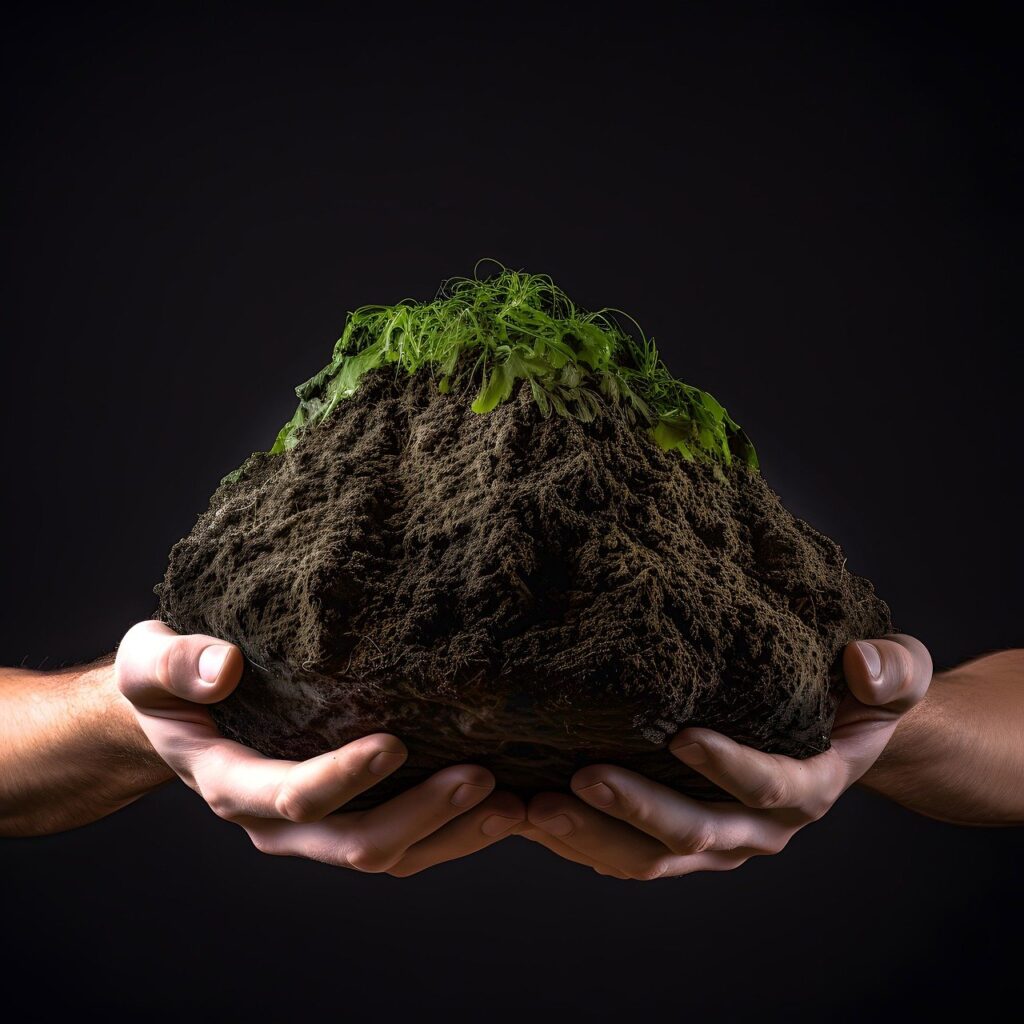
Why Composting Meat and Dairy Products is Challenging
High nitrogen content
Meat and dairy products are high in nitrogen, which can disrupt the balance of carbon and nitrogen in your compost pile. Too much nitrogen can lead to an overabundance of bacteria, resulting in an unpleasant odor and slow decomposition.
Attracts animals and pests
Meat and dairy products attract animals and pests, such as rodents and flies. This can cause problems in your compost pile, as these animals may dig into it or scatter the organic matter around your garden.
Slow decomposition
Meat and dairy products take longer to decompose compared to other organic materials. Their high protein content and fatty composition make them resistant to bacteria and fungi, slowing down the composting process.
Unpleasant odor
When meat and dairy products decompose, they produce a strong and unpleasant odor. This can be off-putting, especially if your compost pile is located near your home or outdoor living areas.
Alternative Methods for Meat and Dairy Composting
While composting meat and dairy products in a traditional compost pile is challenging, there are alternative methods that can be used to effectively compost these materials. Here are some options:
Bokashi composting
Bokashi composting is a process that uses beneficial microbes to ferment organic waste, including meat and dairy products. This method involves using a specialized system and adding a bran-based inoculant to the waste. The waste is then sealed in an airtight container and left to ferment for several weeks. After fermentation, the waste can be added to a traditional compost pile or buried in the soil.
Hot composting
Hot composting involves creating a compost pile that reaches high temperatures, typically between 130-160°F (55-70°C). These high temperatures help to break down organic materials quickly, including meat and dairy products. The hot composting process requires careful monitoring and turning of the pile to maintain optimal conditions for decomposition.
Vermicomposting
Vermicomposting utilizes worms to break down organic waste, including meat and dairy products. Red worms (Eisenia fetida) or red wigglers are commonly used for vermicomposting. These worms consume the organic matter and produce nutrient-rich castings, or worm compost. By providing the worms with a balanced diet and maintaining suitable conditions, vermicomposting can effectively compost a wide range of materials, including meat and dairy products.
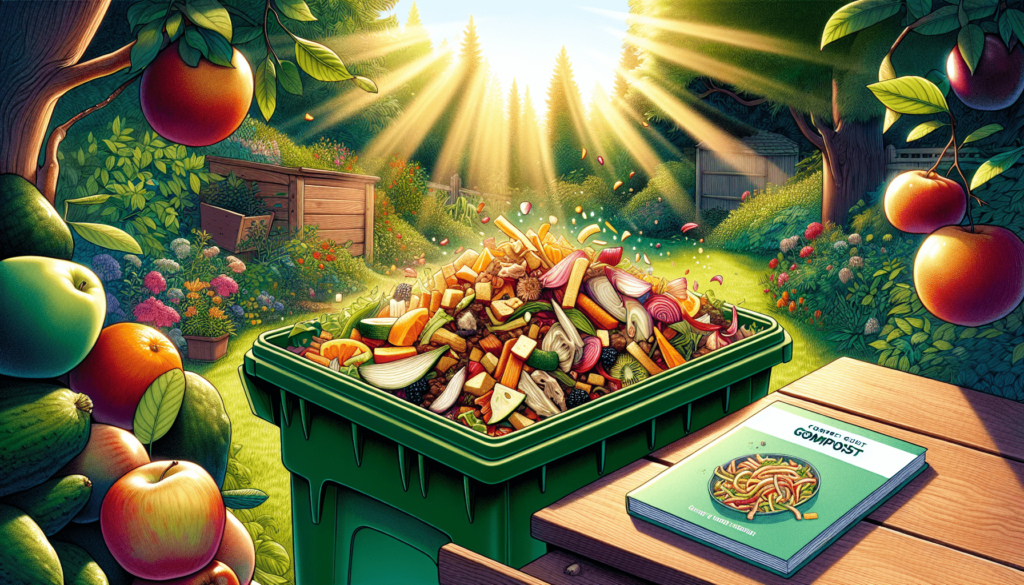
Bokashi Composting
Introduction to bokashi composting
Bokashi composting is an anaerobic fermentation process that allows the breakdown of food waste, including meat and dairy products, through the use of beneficial microorganisms. The process originates from Japan and is a great alternative to traditional composting for those who want to compost meat and dairy products.
How it works
In bokashi composting, organic waste is placed in an airtight container, such as a specially designed bucket or bin, and inoculated with bokashi bran, which contains a mix of beneficial microorganisms. These microorganisms, typically lactobacilli, work to ferment the waste, breaking it down through a pickling process. The fermentation process generally takes approximately two weeks.
Using bokashi compost with meat and dairy products
Bokashi composting effectively handles meat and dairy products by breaking them down through fermentation. This process not only eliminates the unpleasant odors associated with decomposing meat and dairy but also creates a valuable end product that can be further composted or buried in the soil. Once the fermentation process is complete, the bokashi-composted waste can be buried in a garden trench or added to a traditional compost pile, where it will continue to break down and enrich the soil.
Hot Composting
Definition of hot composting
Hot composting is a composting method that utilizes high temperatures to accelerate the breakdown of organic materials. By maintaining a temperature range of 130-160°F (55-70°C), the decomposition process is expedited, resulting in faster compost production.
Creating the right conditions
To achieve and maintain high temperatures, hot composting requires careful attention to the carbon-to-nitrogen ratio, moisture levels, and aeration. A proper balance of green and brown materials, like shredded leaves and kitchen scraps, is crucial for a successful hot composting process. Additionally, it’s important to monitor moisture levels and ensure adequate airflow by turning the pile regularly.
Proper maintenance
A well-maintained hot compost pile is key to achieving and sustaining high temperatures. Turning the pile every few days helps to distribute heat and oxygen, facilitating the breakdown of organic materials, including meat and dairy products. Regular monitoring of moisture levels and adjustment of carbon-to-nitrogen ratio may also be necessary to maintain optimal conditions for hot composting.
Adding meat and dairy products
When hot composting, meat and dairy products can be added to the compost pile, but they should be incorporated properly to prevent potential issues. It’s best to bury them deep within the pile, surrounded by a substantial amount of other organic materials. This helps to minimize odors and discourages pests from being attracted to the compost pile. Remember to maintain a good balance of other carbon-rich materials, such as shredded leaves and straw, to offset the high nitrogen content of the meat and dairy products.
Vermicomposting
Introduction to vermicomposting
Vermicomposting is the process of composting organic waste using worms, specifically red worms (Eisenia fetida) or red wigglers. These worms consume organic matter and produce castings, which are rich in nutrients and beneficial microorganisms, making them an excellent fertilizer for plants.
Types of worms used
Red worms are commonly used in vermicomposting due to their ability to thrive in organic waste and reproduce efficiently. These worms are voracious eaters and can process large amounts of organic materials, including meat and dairy products. Other types of worms, such as earthworms, are not suitable for vermicomposting as they prefer soil and are not efficient at breaking down kitchen waste.
Creating a vermicomposting bin
To start vermicomposting, create a worm bin using a well-ventilated container, such as a plastic or wooden bin. Drill a few small holes in the bin to allow for airflow. Line the bottom of the bin with moistened newspaper or cardboard bedding to provide a comfortable environment for the worms. Add a layer of kitchen scraps and other organic waste, making sure to bury meat and dairy products within the bedding to avoid attracting pests. Finally, introduce the worms to the bin and cover with additional bedding materials.
Including meat and dairy products
When vermicomposting, it is possible to include meat and dairy products in moderation. However, it is essential to bury these items deep within the bedding to prevent pests and odors. Remember to maintain the right balance of carbon-rich bedding materials, such as shredded paper or dry leaves, to offset the high nitrogen content of the meat and dairy products. As the worms process the organic waste, including meat and dairy, they will convert it into nutrient-rich worm castings, which can be used to fertilize your plants.
Conclusion
Composting is not only an effective way to manage organic waste, but it also benefits the environment and improves the health of our soils. By composting fruit and vegetable scraps, coffee grounds, eggshells, grass clippings, leaves, shredded newspaper, tea bags, and wood ash, we can create valuable compost that enriches our gardens. However, composting meat and dairy products can be challenging due to their high nitrogen content, ability to attract pests, slow decomposition, and unpleasant odor. Fortunately, alternative methods such as bokashi composting, hot composting, and vermicomposting offer solutions for effectively composting meat and dairy products. These methods utilize specific processes and proper management to break down these challenging materials and produce valuable compost. By considering these alternatives, we can continue to compost a wide range of organic waste while minimizing waste sent to landfills and promoting sustainable gardening practices.

